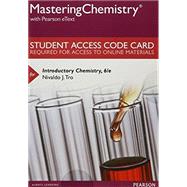DIGITAL UPDATE available for Fall 2020 classes
For one-semester courses in Preparatory Chemistry.
Builds 21st century and problem-solving skills, preparing students for success
The best-selling Introductory Chemistry text continues to encourage student interest by showing how chemistry manifests in students’ daily lives. Author Nivaldo Tro draws upon his classroom experience as an award-winning instructor to extend chemistry from the laboratory to the student’s world, capturing student attention with relevant applications and an engaging writing style. The text provides a superior teaching and learning experience, enabling deep conceptual understanding, fostering the development of problem-solving skills, and encouraging interest in chemistry with concrete examples. Extending chemistry from the lab to the student’s world, the text reveals that anyone can master chemistry.
Personalize learning with Mastering Chemistry
By combining trusted author content with digital tools and a flexible platform, Mastering personalizes the learning experience and improves results for each student. Mastering Chemistry provides an extension of learning, allowing students a platform to practice, learn, and apply knowledge outside of the classroom.
You are purchasing an access card only. Before purchasing, check with your instructor to confirm the correct ISBN. Several versions of the MyLab™ and Mastering™ platforms exist for each title, and registrations are not transferable. To register for and use MyLab or Mastering, you may also need a Course ID, which your instructor will provide.
If purchasing or renting from companies other than Pearson, the access codes for the Mastering platform may not be included, may be incorrect, or may be previously redeemed. Check with the seller before completing your purchase.








